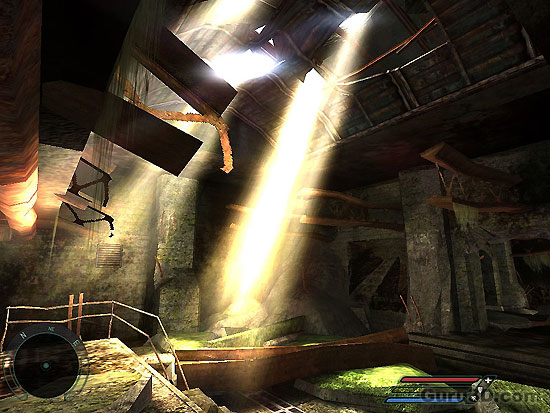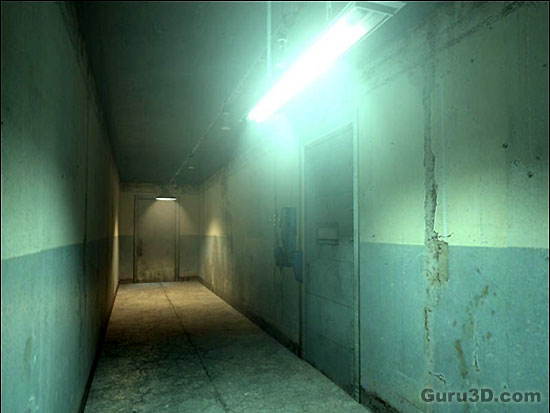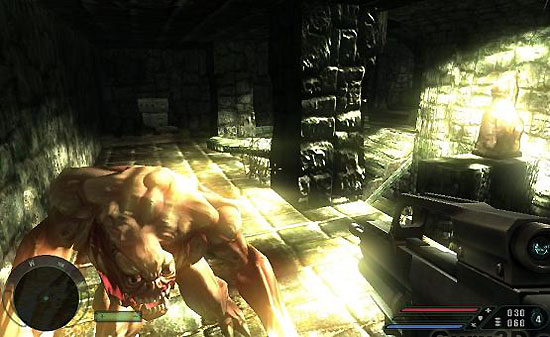Page 4 - A Higher Dynamic Range
A High(er) Dynamic Range!![]()
At an NVIDIA presentation it became obvious that has put a lot of money into their technology to support HDR in the best possible way. HDR is something you all known from games like Far Cry, extremely bright lighting that bring a really cool cinematic effect to gaming. This effect is becoming extraordinarly popular. Even now Valve is working on some HDR goodness in Half Life 2: Lost Coast, which is bound to be released next month (free download through Steam actually) that will heavily rely on this technology. The difference is obvious.

HDR standard for High Dynamic Range. HDR facilitates the use of color values way beyond the normal range of the color palette in an effort to produce a more extreme form of lighting rendering. Typically this trick is used to contrast really dark scenery. Extreme sunlight, over-saturation or over exposure is a good example of what exactly is possible. The most simple way to describe it would be controlling the amount of light used present in a certain position in a 3D scene. Now then, why explaining HDR this much? Well because the G70 has specific new functionally to make HDR function faster and more widespread. Games usually are limited to an 8-bit (ARGB8) back buffer, which offers a range of only 256 levels. The G70 can manage 64-bit floating point texture filtering and blending folks. HDR is already present in Far Cry, next month in Half Life 2: Lost Coast and will be available in Unreal 3 to name a few titles.
Let's have some screenshots do the talking.


Anisotropic filtering![]()
Texture mapping is a rather easy graphical modeling technique that makes complex and impressive looking 3D objects. The technique of Anisotropic filtering tries to achieve the best possible texture mapping in situations where the models geometry places stringent requirements on the texturing process. Anisotropy is the effect (distortion) that you notice in Texels (Texture per Pixel) of a 3D object who's surface is oriented at an angle with respect to a viewpoint of the screen.

If a pixel from such a surface is mapped to texels, its shape becomes distorted. Currently the most advanced filtering technique available that compensates for anisotropic pixel distortion is... Anisotropic filtering. Okay, now for non Guru's. Anisotropic filtering is a way to create better and sharper image quality for perspective in depth scenes. When you make use of this function remember this, the greater the degree of Anisotropic filtering the lower the performance of the videocard.
GeForce Series 7 can handle 16 levels of AF and yours truly recommends you to enable it where possible!
